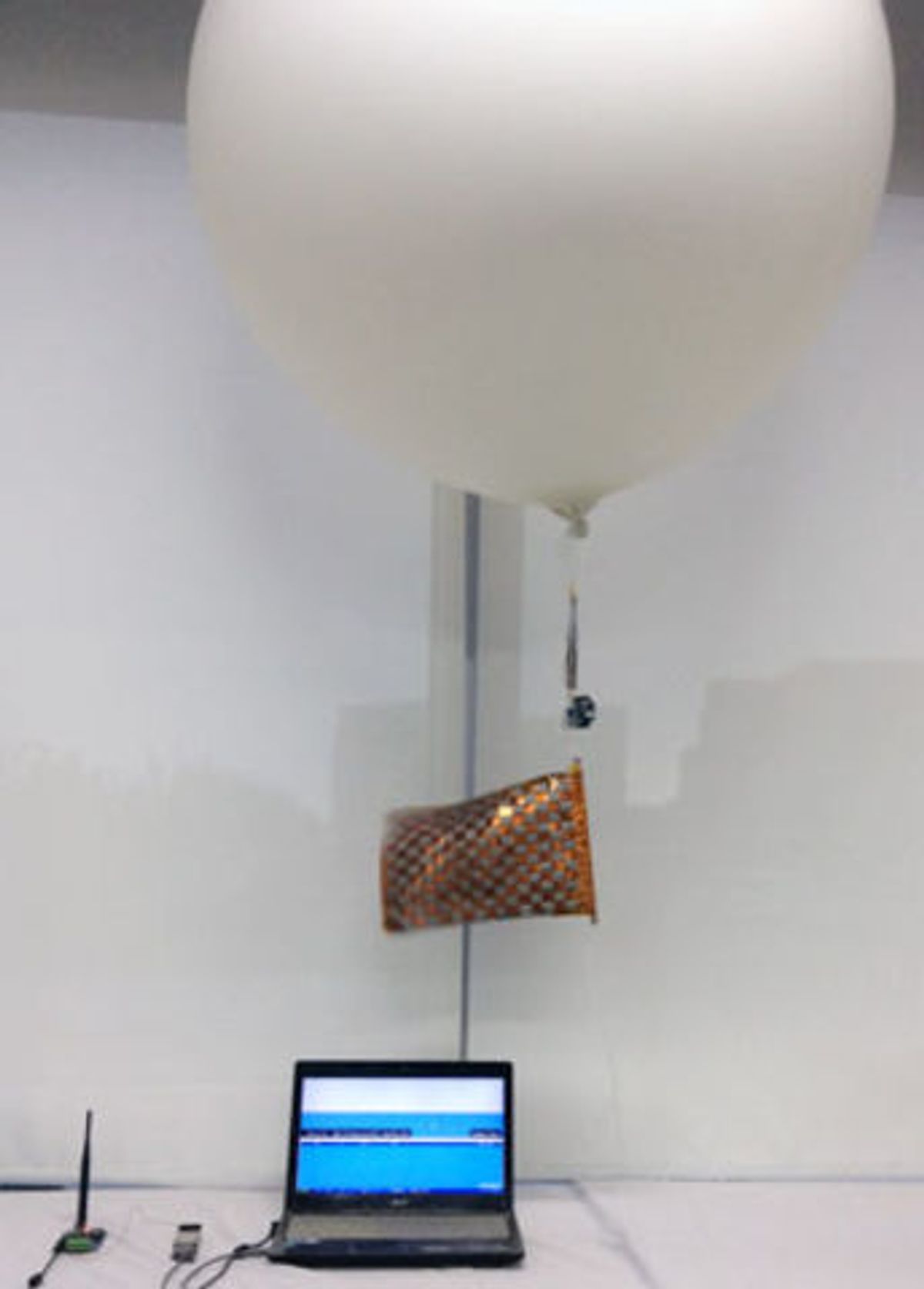Just by flapping in the wind, a new energy-generating flag produces enough electricity to power small electronic devices. The flag converts mechanical energy into electricity using the effect behind static electricity. Floating high above the ground using balloons, it could harvest high-altitude winds to power weather and environmental monitoring sensors, as well as navigation systems.
Winds at high altitudes are faster and more consistent than those near the ground, but ground-based turbines are unable to reach those heights. Many groups are testing technologies such as floating turbines, kites, sails, and winged craft to harness these high-altitude winds.
“How about a little piece of fabric for wind power?” asks Zhong Lin Wang, a materials science and engineering professor at Georgia Tech, in Atlanta. The flag’s low cost and easy scalability could make it competitive with other airborne wind power technologies, he says.The details of the Georgia Tech team’s research appear in the journal ACS Nano.
The flag operates on the triboelectric effect. When the surfaces of two different materials touch and separate, electrons transfer from one to the other, building up opposite charges on the two surfaces. This can lead to a voltage that drives electric current.
Wang’s group has made several generators that scavenge energy from body movements and mechanical vibrations to produce electricity. In early 2015, the team reported a slinky-shaped generator and an energy-scavenging fabric that could power gadgets using human motion.

“The weave is loose and there is a few hairs’ distance between the two fabric strips,” Wang explains. So as the flag flutters in artificially generated wind, the two fabric units repeatedly touch and separate from each other, generating power.
At a wind speed of 22 meters per second, the flag produces a maximum of about 40 volts and 30 microamperes. Three flags connected in parallel could light up 16 commercial LEDs. As a demonstration, the researchers connected the flag’s output to a button cell battery that powered a humidity and temperature sensor node that transmits data wirelessly to a computer. This whole system was tethered to a meteorological balloon that hovered in an indoor laboratory where the researchers were able to vary temperature and humidity.
Prachi Patel is a freelance journalist based in Pittsburgh. She writes about energy, biotechnology, materials science, nanotechnology, and computing.



